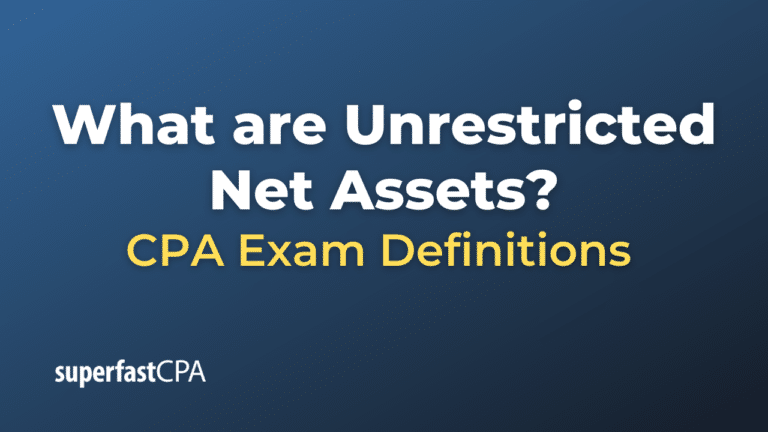Managing Restricted Net Assets in Nonprofit Accounting

Additionally, the Statement of Activities, similar to an income statement, outlines the organization’s revenues and expenses over a reporting period. This statement must also segregate activities based on the presence or absence of donor restrictions, offering a detailed view of how funds are generated and expended. The statement of activities, which details the nonprofit’s revenues and expenses, also reflects the impact of released net assets. When funds are reclassified, they are typically reported as revenue in the unrestricted net assets section. This can lead to a noticeable increase in total revenues, providing a more comprehensive view of the organization’s financial performance. By accurately reporting these changes, nonprofits can offer a transparent account of how donor contributions are being utilized, thereby reinforcing donor confidence and fostering long-term support.
Unrestricted Net Assets and Key Financial Ratios Help Nonprofits Focus on their Financial Health
These funds are not subject to any donor-imposed restrictions and can be used for any purpose deemed necessary by the nonprofit. Unrestricted net assets are an essential component of a nonprofit’s financial health as they provide flexibility and stability in managing day-to-day operations and pursuing long-term goals. They serve as a safety net that allows the organization to respond to unforeseen challenges and seize opportunities for growth.
Best Practices for Nonprofit Financial Health, Part One: Top 3 Measures of Financial Health
Endowment funds represent a significant aspect of permanently restricted net assets. These funds are designed to provide a perpetual source of income for the nonprofit, with the principal amount remaining intact while the investment income is used for specific purposes. Managing endowment funds requires a strategic approach to investment, balancing the need for income generation with the preservation of the principal. Nonprofits often establish investment policies that outline their approach to asset allocation, risk management, and spending.
Two Key Financial Ratios

This not only marks the successful completion of a project but also frees up resources for future initiatives. To increase your organization’s unrestricted net assets, you’ll need to generate more revenue or reduce expenses. One way to increase revenue is to expand your donor base by conducting a capital campaign or hosting a special event. Another option is to use endowments or other restricted funds to cover operating expenses. This will free up more of your unrestricted funds to be used for other purposes. By carefully managing your finances, you can ensure that your organization has the resources it needs to flourish.
The Role of Net Assets in Financial Reporting
These assets are not bound by donor-imposed restrictions, allowing the organization to allocate them where they are most needed. This flexibility is particularly valuable for covering operational costs, unexpected expenses, or new initiatives. Unrestricted funds can be generated through general donations, fundraising events, or revenue from services provided. The ability to use these funds without restriction enables nonprofits to respond swiftly to changing circumstances and opportunities, making them a vital component of financial stability.
- Also that’s the way we’ve always said it until a recent accounting pronouncement introduced the new language.
- Temporarily restricted net assets are funds that donors have earmarked for specific purposes or projects, with the expectation that the restrictions will be lifted once certain conditions are met.
- The detail in the general ledger accounts will always be available for management’s use.
- The objective is to present clear and easily readable reports, and not to make the reader work hard to figure it out.
- Besides the terminology, a key difference between for-profit organizations’ equity and nonprofit net assets is that not all nonprofit net assets should be categorized the same way.
Further, providing a single lump sum balance for net assets without donor restrictions often does not tell the full story. For instance, the total net asset balance in all three examples below is $100,000. Organizations typically prefer donations of unrestricted net assets because they allow them maximum flexibility to spend as they see fit, whether for hiring additional personnel or expanding their services. The main benefit of having unrestricted net assets is that it gives the company the flexibility to respond to unexpected circumstances and opportunities. These are funds that the donor invested and the organization only has access to the proceeds, which should also be used for a goal declared by the donor. For example, I have a simple nonprofit audit that derives it’s program revenue from membership dues only.
I’m often asked if I have benchmarking data for organizations to compare themselves to. This can be helpful for certain organizations, but the organization that it is most important to benchmark against, is your own organization over time. Make sure to compare your company’s key organizational metrics, such as Readily Available Net Assets, before benchmarking against other organizations. Temporarily how to calculate unrestricted net assets restricted assets usually are donated for a particular purpose and must be used by a particular date, such as within one year. An example might be a donation to the Red Cross for emergency aid delivered to Puerto Rico after a hurricane. AVAILABLE NOW – Great Beginnings for New Nonprofits, a free 8-part email course on fundraising, financial management and other “must know” topics.
The reclassification process also involves updating financial statements to reflect the change in the nature of the net assets. This ensures that stakeholders have an accurate understanding of the organization’s financial position. Transparency in this process is crucial, as it demonstrates the nonprofit’s commitment to honoring donor restrictions and maintaining financial integrity. Regular communication with donors about the status of their contributions can also help manage expectations and build long-term relationships. Unrestricted net assets are funds that a nonprofit can use at its discretion to support its general operations and any other activities that align with its mission.
